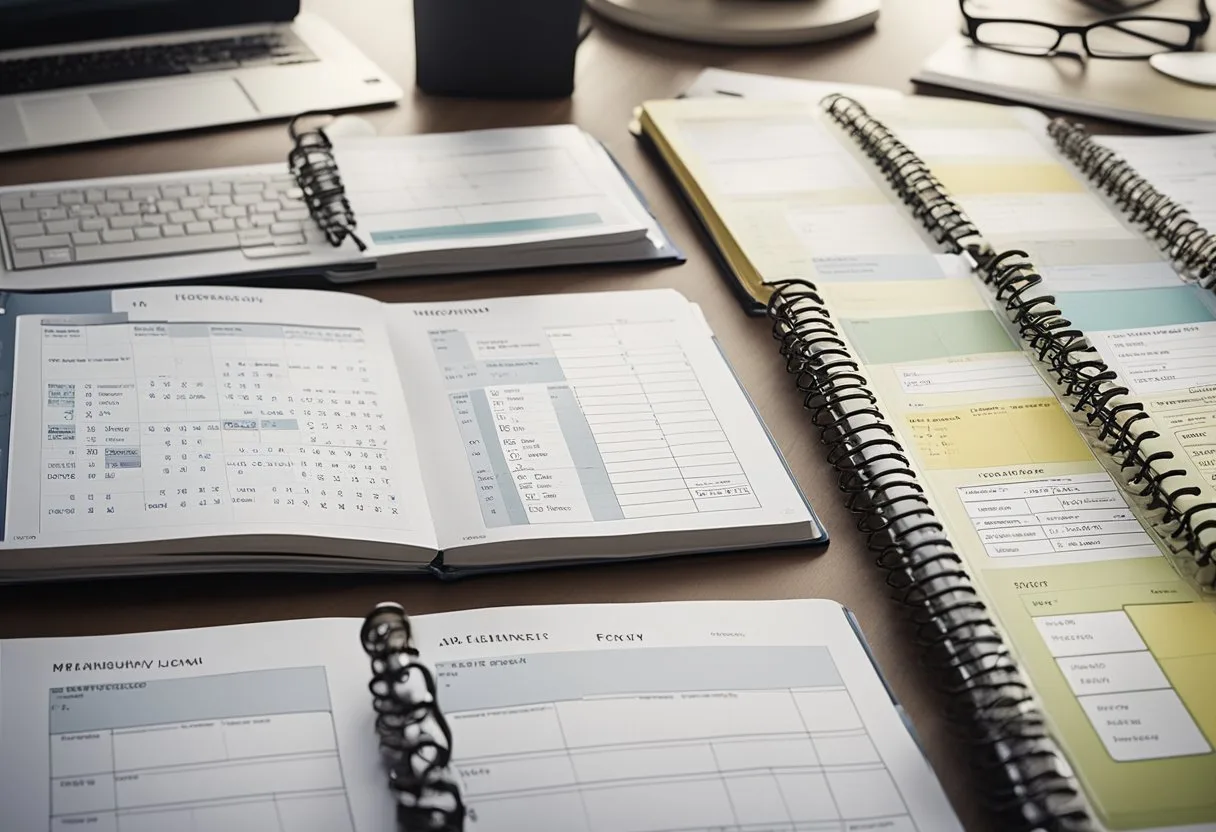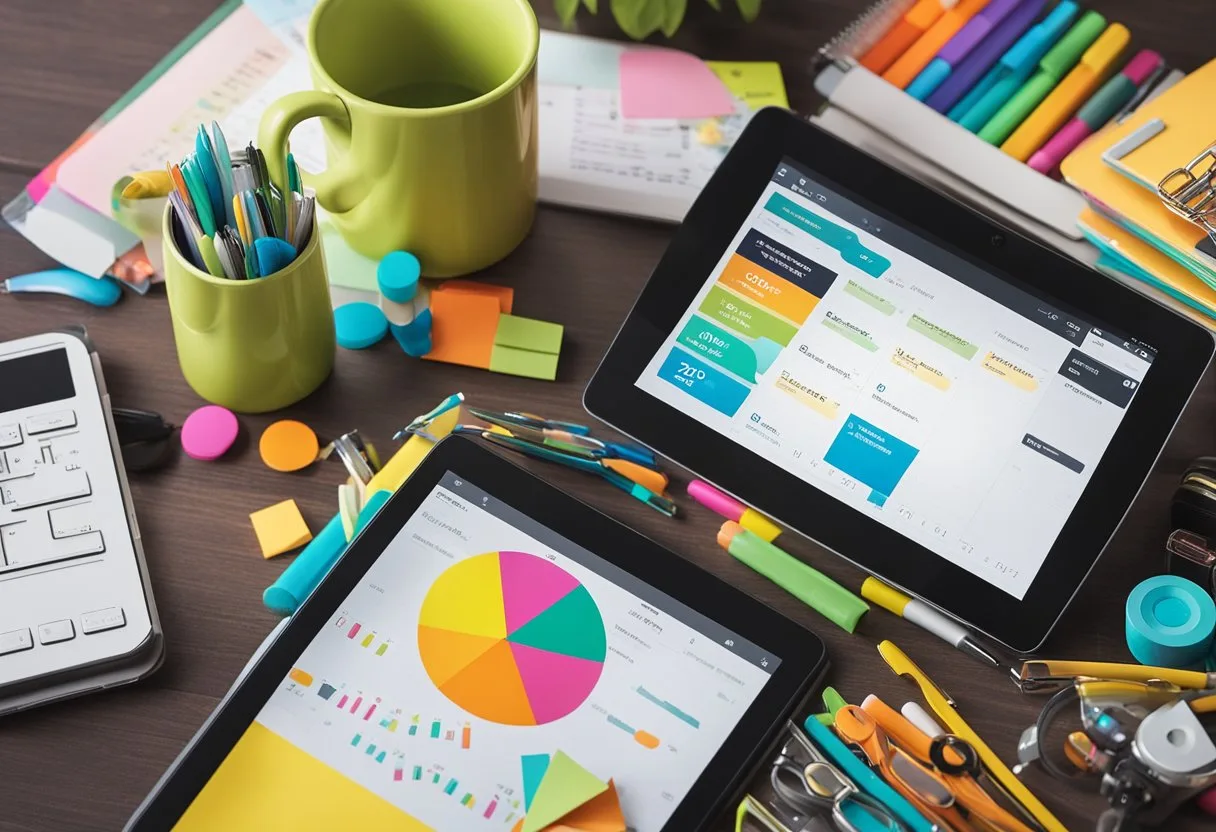Choosing the right planner can be a daunting task, especially with the plethora of options available in the market today. However, with a clear understanding of one’s purpose, organization and productivity needs, the process can be simplified. In this blog post, I will share with you how to choose a planner and the factors to consider when choosing a planner.
When choosing a planner, it is important to consider the purpose for which it will be used. Is it for personal or professional use? Will it be used for goal setting or time management? Answering these questions will help identify the type of planner that best suits one’s needs.
Another important factor to consider is organization. A planner should be able to help one stay organized by providing ample space for notes, to-do lists, appointments, and other important information. It should also be easy to navigate and use, with clear sections and labeling.
Understanding Different Types of Planners
When it comes to choosing a planner, there are several types to consider. The two main types of planners are paper and digital. Each has its pros and cons, and the choice ultimately depends on personal preference.
Paper Planners vs. Digital Planners
Paper planners are the traditional option, and some people prefer the tactile experience of writing things down. They come in various sizes, from pocket-sized to larger options, and can be customized with different layouts and covers. However, paper planners can be bulky and difficult to carry around, and they require regular maintenance to keep them up to date.
On the other hand, digital planners are becoming increasingly popular, especially with the rise of smartphones and tablets. They offer the convenience of being able to access your planner from anywhere, and many come with features such as reminders and syncing capabilities. However, some people find it difficult to adjust to the digital format, and there is a risk of losing data if not backed up properly.
Dated vs. Undated Planners
Another consideration when choosing a planner is whether to go for a dated or undated option. Dated planners come pre-printed with dates and are ready to use right away. They offer structure and help keep you on track with deadlines and appointments. However, if you miss a day or two, you may feel like you’ve wasted pages.
Undated planners, on the other hand, offer more flexibility and allow you to start using them at any time. They are easy to personalize around your goals and work rhythm, so they feel more like companions than lists of obligations. However, they require more effort to set up initially, and you may need to update them regularly.
Various Layouts: Daily, Weekly, Monthly
Finally, planners come in various layouts, including daily, weekly, and monthly options. Daily planners offer a lot of space for detailed planning, while weekly planners provide a broader overview of your schedule. Monthly planners are ideal for long-term planning and goal setting.
When choosing a layout, consider how much detail you need to include and how much space you have available. Daily planners are great for busy schedules, while weekly and monthly planners are better suited for those with more flexibility.
Choosing the right planner depends on personal preference and lifestyle. Consider the pros and cons of paper and digital options, dated and undated layouts, and different planner sizes and layouts. With the right planner, you can stay organized and on top of your goals.
How to choose a planner
- Assess Your Needs: Determine what you need from a planner. Consider your schedule complexity, tasks, goals, and whether you’ll need space for notes or creative elements.
- Decide on a Size: Choose a planner size that fits your lifestyle. A larger planner might be suitable for desk use, while a smaller one could be better for on-the-go.
- Select a Layout: Pick a layout that works for you-daily, weekly, or monthly. Consider if you need an hourly schedule, a to-do list section, or just an overview of the week.
- Consider the Time Frame: Decide if you want a 12-month planner, an academic year, or an undated planner that offers more flexibility.
- Choose Binding and Cover: Think about durability and ease of use. Spiral-bound planners lay flat easily, while hardcover planners offer more protection.
- Look at Extra Features: Some planners include extras like stickers, pockets, tabs, and inspirational quotes. Decide if these features will be helpful or just a distraction.
- Set a Budget: Determine how much you’re willing to spend. Planners can range from affordable to quite expensive, so find one that fits your financial comfort zone.
Factors to Consider When Choosing a Planner
When choosing a planner, there are several factors to consider to ensure that it meets your needs. Below are some of the most important factors to consider.
Size and Portability
The size of a planner is a crucial factor to consider. A planner that is too large may be difficult to carry around, while a planner that is too small may not have enough space for your schedule and notes. It is essential to choose a planner that is the right size for your needs and lifestyle.
Portability is another important factor. If you are always on-the-go, you may want to choose a planner that is lightweight and easy to carry around. On the other hand, if you mostly work from home, you may not need to worry as much about portability.
Layout and Space for Scheduling
The layout of a planner is another crucial factor to consider. Some planners have a daily, weekly, or monthly layout, while others may have a combination of all three. It is essential to choose a planner that has a layout that suits your scheduling needs.
Moreover, the space available for scheduling is another essential factor. If you have a lot of appointments and tasks to schedule, you may want to choose a planner that has ample space for scheduling. However, if you have a relatively light schedule, you may not need as much space.
Customization Options
Customization is another crucial factor to consider when choosing a planner. Some planners come pre-printed with dates and schedules, while others are undated and allow for more customization. It is essential to choose a planner that has the customization options that suit your needs.
Some planners may have customizable covers or additional inserts that allow you to personalize your planner further. If you value customization, you may want to choose a planner that has these options available.
The size, layout, and customization options are essential factors to consider when choosing a planner. By considering these factors, you can ensure that you choose a planner that meets your needs and helps you stay organized and productive.
Evaluating Planner Features for Functionality
When choosing a planner, it’s important to evaluate the features for functionality. This will ensure that the planner meets your specific needs and will be easy to use. Here are some key features to consider when evaluating a planner:
Quality of Binding and Cover
The quality of the binding and cover is an important factor to consider when choosing a planner. A sturdy binding will ensure that the pages stay in place and won’t fall out over time. A durable cover will protect the planner from wear and tear, ensuring that it lasts for the entire year. A cover that is aesthetically pleasing can make the planner more enjoyable to use.
Paper Quality and Durability
The paper quality and durability are also important factors to consider when choosing a planner. High-quality paper will prevent ink from bleeding through and will ensure that the writing is legible. Durability is also important, as the planner will be used frequently throughout the year. A planner with durable paper will be able to withstand wear and tear, ensuring that it lasts for the entire year.
Additional Features: Bookmarks, Pockets, Stickers
It’s important to consider any additional features that the planner may have. Bookmarks can be useful for keeping track of important pages, while pockets can be used to store loose papers. Stickers can also be a fun addition, allowing users to personalize their planner and make it more enjoyable to use. However, it’s important to ensure that these additional features don’t detract from the planner’s overall functionality.
Aligning a Planner with Your Goals and Lifestyle

Setting and Tracking Goals
When choosing a planner, it is important to consider your goals and how you plan to achieve them. Some planners incorporate more goal planning and productivity assessments, while others focus more on daily and weekly planning.
It is recommended to choose a planner that includes both monthly and weekly reviews, as well as pages that help you break down your goals and stay on track throughout the year. Some planners incorporate budget and expense tracking, which can be helpful for those with financial goals.
Planners for Specific Roles: Students, Teachers, Parents
Different roles have different priorities and responsibilities, and choosing a planner that aligns with those priorities can be helpful. For students, a planner that includes sections for assignments, exams, and project due dates can be beneficial.
Teachers may benefit from a planner that includes sections for lesson planning, grading, and parent-teacher conferences. Parents may find it helpful to have a planner that includes sections for meal planning, extracurricular activities, and family events.
Incorporating Habit Tracking and Reflection
Habit tracking and self-reflection can be powerful tools for personal growth and productivity. Some planners include habit tracking pages, which can help you establish and track new habits. Incorporating reflection pages into your planner can help you evaluate your progress and make adjustments as needed. When choosing a planner, consider if it includes habit tracking and reflection pages, and if those features align with your personal goals and priorities.
When choosing a planner, it is important to align it with your goals and lifestyle. Consider your specific needs and priorities, such as goal planning, role-specific responsibilities, habit tracking, and self-reflection. By selecting a planner that aligns with your goals and lifestyle, you can increase your productivity and achieve your desired outcomes.
Where to Purchase and How to Start Using Your Planner
Choosing the Right Stationery Store
Choosing the right stationery store is crucial when it comes to purchasing a planner. It is important to choose a store that offers a wide range of planners to choose from, as well as other organizing tools such as calendars, sticky notes, and pens. Some of the popular stationery stores include Staples, Office Depot, and Michaels. These stores offer a variety of planners that cater to different needs and budgets.
It is also important to consider the quality of the planners offered by the store. Look for reviews online or ask for recommendations from friends and family to ensure that the planner you choose is of good quality and will last throughout the year.
Getting Started with a New Planner
Once you have purchased your planner, it is important to start using it right away. The new year is the perfect time to start fresh and get organized. Begin by setting up your planner with important dates such as birthdays, anniversaries, and holidays. This will help you stay on top of important events throughout the year.
Next, create a system for organizing your tasks and to-do lists. This could be as simple as creating different sections in your planner for work, personal, and other tasks. Use color coding or symbols to differentiate between tasks and make it easier to keep track of them.
It is also important to use your planner consistently. Make it a habit to check your planner every day and update it with any new tasks or events. This will help you stay on top of your schedule and avoid missing important deadlines.
Remember, choosing a planner is often a trial and error process. It may take some time to find the perfect planner that fits your needs and style. Don’t be afraid to experiment with different types of planners until you find the one that works best for you.
Frequently Asked Questions
What should I consider when selecting the best planner for my daily tasks?
When selecting the best planner for your daily tasks, you should consider the type of tasks you will be managing, your organizational style, and your preferred layout. You should also consider the size of the planner, the binding, and the durability of the planner.
What are the benefits of a dated versus an undated planner?
A dated planner provides structure and helps to keep you on track, while an undated planner offers more flexibility and allows you to start planning at any time. A dated planner is ideal for those who have a lot of deadlines and appointments to keep track of, while an undated planner is ideal for those who have a more fluid schedule.
How do I determine the right size and layout for my planner needs?
The right size and layout for your planner needs will depend on the type of tasks you will be managing and your personal preferences. If you have a lot of appointments and deadlines to keep track of, a larger planner with a daily or weekly layout may be more suitable. If you prefer to have a more flexible schedule, a smaller planner with a monthly or undated layout may be more suitable.
What features should I look for in a work-specific planner?
When selecting a work-specific planner, you should look for features such as goal-setting pages, project management tools, and space for meeting notes. You should also consider the durability of the planner and whether it can withstand frequent use.
Are premium planners worth the investment over budget options?
Premium planners often offer more features and higher quality materials than budget options. However, whether a premium planner is worth the investment over a budget option will depend on your personal preferences and needs. If you have a lot of tasks to manage and prefer a high-quality planner, a premium option may be worth the investment.
How can I assess which planner will best align with my organizational style?
To assess which planner will best align with your organizational style, you should consider your preferred layout, the type of tasks you will be managing, and your personal preferences. You should also consider whether you prefer a structured or more flexible planning approach.




